Kedves Olvasóink!
Havonta frissülő könyvajánló rovatunkkal a könyvtárunkba frissen érkezett kiadványokra szeretnénk felhívni a figyelmüket. A könyvek kölcsönözhetők, hozzáférhetőségükről az online katalógusban informálódhatnak, további felvilágosítást a könyvtárosoktól kérhetnek.
A könyvtár nyitva tartásáról és a kölcsönzés feltételeiről a könyvtár oldalán tájékozódhatnak.
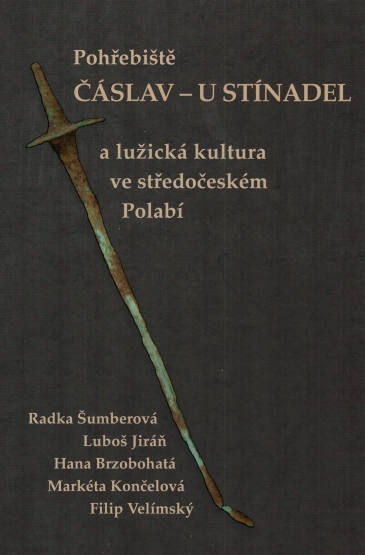
Radka Šumberová, Luboš Jiráň, Hana Brzobohatá, Markéta Končelová, Filip Velímský: Pohřebiště Čáslav – U Stínadel a lužická kultura ve středočeském Polabí
Praha: Archeologický Ústav AV ČR 2021
Raktári jelzet: R-40.022/2021
Nyelv: Cseh
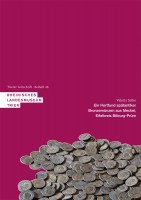
Selke, Valeria: Ein Hortfund spätantiker Bronzemünzen aus Meckel, Eifelkreis Bitburg-Prüm 7486 Prägungen vom 3. Jahrhundert bis zur tetrarchisch-konstantinischen Zeit, verborgen 312/13 n. Chr.
Trier: Dr. Ludwig Reichert, 2021
Sorozat: (Trierer Zeitschrift, Beiheft 38)
Raktári jelzet: R-40.286/2021
Nyelv: Német
Der im Jahr 2010 auf einem Acker gefundene Münzschatz ist mit fast 7.500 Bronzemünzen einer der größten vollständig erhaltenen Hortfunde aus der Zeit um die Wende zum 4. Jahrhundert n. Chr. Er besteht neben einigen hundert Antoninianen der zweiten Hälfte des 3. Jahrhunderts vor allem aus Folles der Tetrarchie und der ersten Regierungsjahre Konstantins d. Gr. Der Schatz wurde 312 n. Chr. nur 20 km entfernt von der Kaiserresidenz Trier vergraben. In numismatischer Hinsicht weist der Fund eine erstaunlich hohe Durchmischung auf: aus der nahegelegenen Trierer Münzstätte sind nur relativ wenige Prägungen enthalten gegenüber denen anderer, vor allem westlicher und zentraler, Münzstätten. Damit liefert dieser große Münzschatz, in dem sich die politische und monetäre Lage zur Zeit seiner Entstehung spiegelt, auch neue Erkenntnisse zum Zirkulationsverhalten sowie zum Münzumlauf in Gallien.
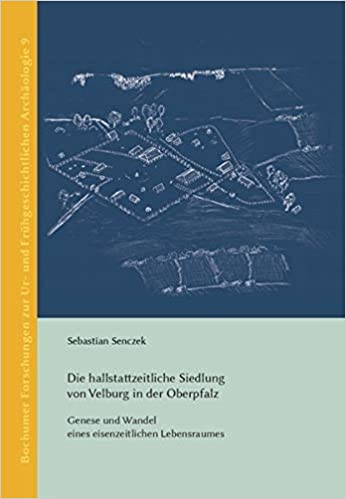
Sebastian Senczek: Die hallstattzeitliche Siedlung von Velburg in der Oberpflaz: Genese und Wandel eines eisenzeitlichen Lebensraumes
Rahden/Westf.: Leidorf, 2020
Sorozat: (Bochumer Forschungen zur ur- und frühgeschichtlichen Archäologie 9)
Raktári jelzet: R-39.982/2021
Nyelv: Német
In Velburg in der Oberpfalz konnten bei Ausgrabungen zwischen 2002 und 2010 mehrere Abschnitte einer größeren hallstattzeitlichen Siedlung freigelegt werden. Die vorliegende Arbeit widmet sich der Auswertung der Siedlungsbefunde und des umfangreichen Fundmaterials. Die insgesamt vier Grabungsareale ergeben eine Ansiedlung, die sich aus verschiedenen Mehrhausgehöften zusammensetzt. Dabei ist eine deutliche Strukturierung der Wohneinheiten erkennbar. Die Strukturierung zeigt sich durch diverse Zaungräbchen, nach denen die Siedlung ausgerichtet ist. Innerhalb dieser gehöftartigen Strukturen konnten mehrere, voneinander unabhängige, Wohneinheiten herausgestellt werden. Es zeigten sich Gehöfte, bzw. Parzellen, die als Wohnbereich interpretiert werden können, Bereiche in denen gearbeitet und produziert wurde und Bereiche, die übergreifend der gesamten Gemeinschaft zugeordnet werden können. Dazu gehört z. B. ein außergewöhnliches Grabenwerk und ein Bereich mit zwei batterieförmigen Ofenreihen. Anschließend an die Auswertung der Siedlung wird der Blick auf die weitere Umgebung des Schwarzen Laabertals gerichtet, um zu klären, wie Velburg, inklusive der umliegenden reichen Gräber, in die Hallstattzeit der Oberpfalz einzuordnen ist. Vervollständigt wird das Bild der Siedlung durch die Auswertung des Tierknochenmaterials durch Jörg Ewersen.
Several parts of a larger Hallstatt period settlement were excavated in Velburg [Upper Palatinate] between 2002 and 2010. The present volume offers an analysis of the settlement and the extensive finds assemblage. The four excavated areas reveal a settlement composed of several multi-house farmsteads. These settlement units are clearly structured, as shown by several fence lines which determine the settlement's orientation. Several independent residential units could be identified within these farmstead-like structures. It was possible to recognise farmsteads or plots which can be interpreted as residential areas, as well as areas dedicated to working and production and common areas that can be associated with the settlement community as a whole. Among the latter are an exceptional earthwork and an area with two battery-like rows of ovens. Following on from the interpretation of the site's structure, the volume discusses the wider surroundings in the valley of the Schwarze Laaber river in order to contextualise Velburg, including the rich burials unearthed in the surroundings, within the Hallstatt period Upper Palatinate. An analysis of the animal bone assemblage by Jörg Ewersen completes the picture.
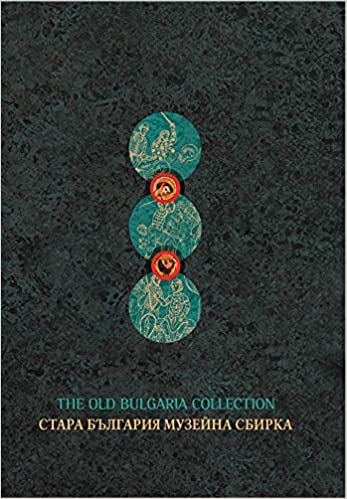
Attila Türk, Csilla Balogh, Olga Pelevina, Boyen Totev (eds): The Old Bulgaria Museum Collection / Стара България Музейна Сбирка
Budapest: Archaeolingua 2021
Sorozat: Archaeological Studies of PPCU Institute of Archaeology 20.
Raktári jelzet: feldolgozás alatt
Nyelv: Bolgár/Angol
This bilingual (English and Bulgarian), richly illustrated book presents a selection of finds from the Stara Bulgaria Collection, offering a wealth of new source material for the study of Balkanic connections of the archaeological legacy of the Avar period and the 10th–11th centuries of the Carpathian Basin, the comparison of the metalwork from the Carpathian Basin and Bulgaria, and their the cultural implications.
The Stara Bulgaria Collection is made up of 4210 items, most of which are belt fittings, costume accessories, horse gear fittings and buckles. Most of these objects date from the 6th–11th centuries, with some coming from earlier periods (Scythian, Thracian, Roman and early Migration period) and some from later ages (12th–18th centuries). Even though the exact findspots remain unknown, most are known to have come to light somewhere in north-eastern Bulgaria.
The Collection is the fruit of an almost one and a half decades long collecting activity. Our research group did not undertake to present the entire collection; however, the 2557 pieces described and published in the present volume offer a representative selection of the finds, with a focus on the early medieval period.
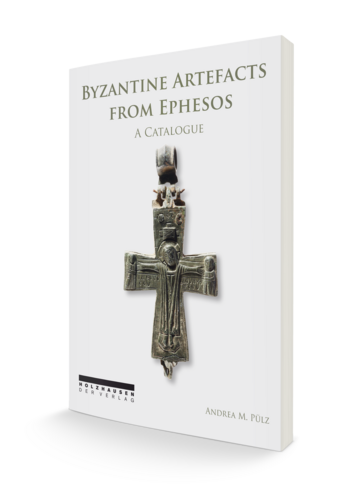
M. Pülz, Andrea: Byzantine artefacts from Ephesos: a catalogue
Vienna: Holzhausen Verlag 2017
Raktári jelzet: R-39.994/2021
Nyelv: Angol
The material legacy of the Byzantine period includes, in addition to jewellery and dress accessories, amulets and other magical objects, lead seals, bread stamps, medicinal and cosmetic instruments, weighing scales and weights, writing utensils and work tools, as well as small-scale implements including various lighting devices, locks and keys. The materials used are equally varied: luxury goods were frequently produced from precious metals, ivory and silk. ›Ordinary‹ jewellery, in contrast, was generally made of nonferrous metal and glass.
Small finds are therefore primarily testimonials of daily life, yet at the same time also of technical skills, economic relations, trading contacts as well as religious and artistic beliefs. Belonging to the luxury goods from the sacred/ecclesiastical realm, for example, are processional crosses, chalices, incense burners, polycandela, reliquaries and votive icons.A differentiation between profane and sacred usage is, however, not always easy, since objects with Christian images and symbols cannot in themselves always be assigned to the ecclesiastical or sacred realm. Thus, for example, reliquary crosses (encolpia) and cross pendants may also be assessed as an expression of individual religiosity and private piety. The perception of the Byzantine jewellery and dress accessories has until today primarily been determined by the luxury goods of gold and silver, although these represent only a minor part of the Byzantine artefacts. The comprehensive analysis of the numerous objects of copper alloys, that is, differing alloys of non-ferrous metals, is also assigned a particular significance, since these are able – as in the case of Ephesos − to provide a valuable contribution to the study of the material culture of daily life and the history of the Byzantine era.
The Ephesian small finds comprise about 1,100 objects and originate from a variety of sites and from differing contexts (settlement areas and graves). We may cite, for example, the Late Antique-Medieval City Quarter
south of the Church of St. Mary, the so-called Byzantine Palace, the medieval superstructures and later usages in the Terrace House 2, the Church of St. Mary, or the Basilica of St. John. Thanks to a co-operation with the Ephesos Museum Selçuk it has been possible to incorporate objects into this study whose precise provenance is, in part, unknown (scattered finds which were brought to the museum by the local inhabitants) or which originate from Turkish excavations. The Byzantine finds which were brought from Ephesos to the Kunsthistorisches Museum Vienna in the late 19th and early 20th century have also been considered in this study.
The objects introduced present a selection of the jewellery and dress accessories, as well as diverse crosses, found in and around Ephesos.
Published with the support of the Gedächtnisstiftung PETER KAISER (1793–1864)| Vaduz - Principality Liechtenstein
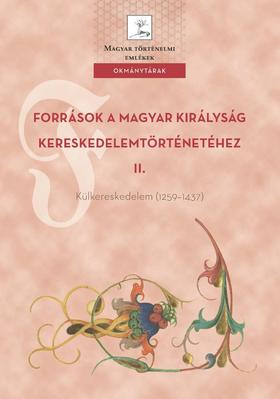
Weisz Boglárka (szerk.): Források a Magyar Királyság kereskedelemtörténetéhez II. Külkereskedelem (1259–1437)
Budapest: Bölcsészettudományi Kutatóközpont 2021
Sorozat: (Magyar történelmi emlékek. Okmánytárak)
Raktári jelzet: R-40.283/2021
Nyelv: Magyar
A kereskedelem a gazdaság valamennyi ágával összefüggésbe hozható, és nincs olyan társadalmi csoport, amelyet valamilyen formában ne érintettek volna a kereskedelmi folyamatok. A külkereskedelem résztvevői között pedig nemcsak magyar, hanem külföldi személyek, illetve városok és intézmények képviselői is megtalálhatóak. A kereskedelmi színterek, a kereskedelmi szerződések, szabályozások a külkereskedelmet meghatározó, alakító tényezők voltak. A külkereskedelemben résztvevők összetételét pedig jelentős mértékben befolyásolta az uralkodó kül- és gazdaságpolitikája, miközben a kölcsönök és áruhitelek által szövevényes kapcsolatrendszer alakult ki az egymáshoz közeli és távoli területeken élők között. Némely külföldi kereskedő a Magyar Királyságban lelt új hazára, szoros kapcsolatot épített ki akár a királyi udvarral is, annak szolgálatába is állt, mely kölcsönök nyújtásában, árubeszerzésben vagy éppen a pénzügyigazgatásban betöltött pozícióban, feladatokban nyilvánult meg.
A kötet válogatott, latin és német nyelvű okleveleken, leveleken, fogalmazványokon, rendeleteken, városkönyvi bejegyzéseken keresztül mutatja be az olvasónak a külkereskedelem-történet változatos képét az Árpád-kortól a Zsigmond kor végéig tartó évszázadokban.
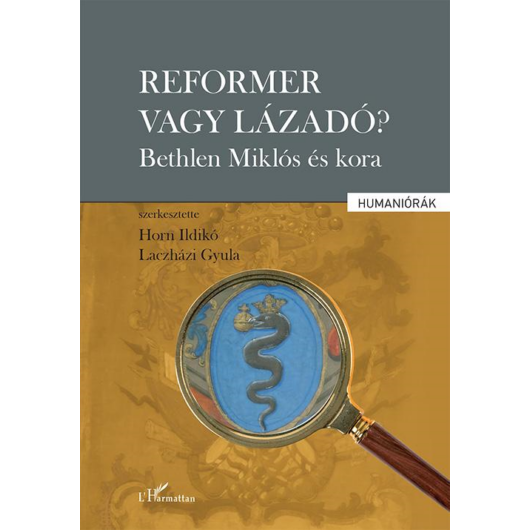
Horn Ildikó, Laczházi Gyula (szerk.): Reformer vagy lázadó?: Bethlen Miklós és kora
Budapest: L'Harmattan 2020
Sorozat: (Humaniórák)
Raktári jelzet: R-40.027/2021
Nyelv: Magyar
Bethlen Miklós (1642-1716) erdélyi kancellár az elmúlt évszázad során fokozatosan vált a kora újkori erdélyi politika ikonikus alakjává és a régi magyar irodalom kanonizált szerzőjévé. Nagy formátumú államférfi, a magyar önéletírás-irodalom egyik legkiválóbb képviselője, óriási műveltség birtokosa, egyszersmind kora aktuális eszmeáramlataiban magas szinten tájékozódó, egyéni karakterű vallásos és filozófiai gondolkodó volt. Rendkívül kiterjedt európai kapcsolatrendszert működtetett, hosszú ideig aktív alakítója volt kora politikájának. Óvatos, körültekintő reálpolitikusból lett nyílt lázadó, a Habsburg-kormányzat ellenfele. Élete utolsó részét fogságban töltötte. Ez a tanulmánykötet a Bethlen Miklós halálának 300. évfordulójára az Eötvös Loránd Tudományegyetemen megrendezett konferencia előadásain alapul. A könyv szerzői - különböző tudományszakok: a történelem, a helytörténet, az irodalomtörténet, a filozófia, a mentalitástörténet, a művelődéstörténet képviselői - egymás vizsgálódásait megvilágítva alkotnak korszerű képet Bethlen Miklósról és koráról.




